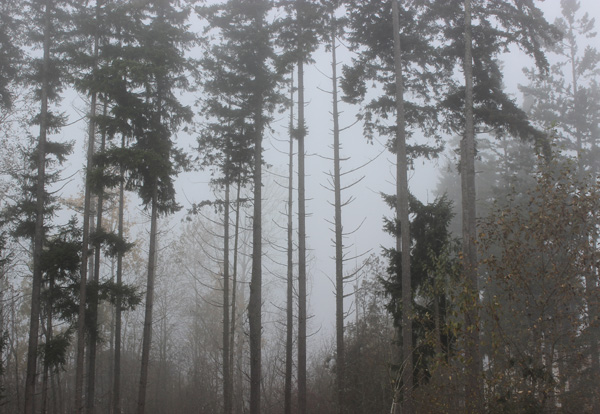I love the foggy days here. This is the view from our front porch. It is so very Twin Peaks, isn't it?
This is a busy time of year, as projects that started not long ago are hurrying to get "dried-in" - meaning plywood sheathing on, the roofing installed, building paper up on the exterior walls, and windows installed. All of this happens while the plumbers, electricians, and heating systems subcontractors are busy running all of their lines (the "rough-in phase" of their work.)
This is what that phase looks like for an interior space being remodeled:
And this is what it looks like for an addition:
Note the lovely green tarp that is temporarily protecting the area from rain (not foolproof, but the best affordable option there is).









